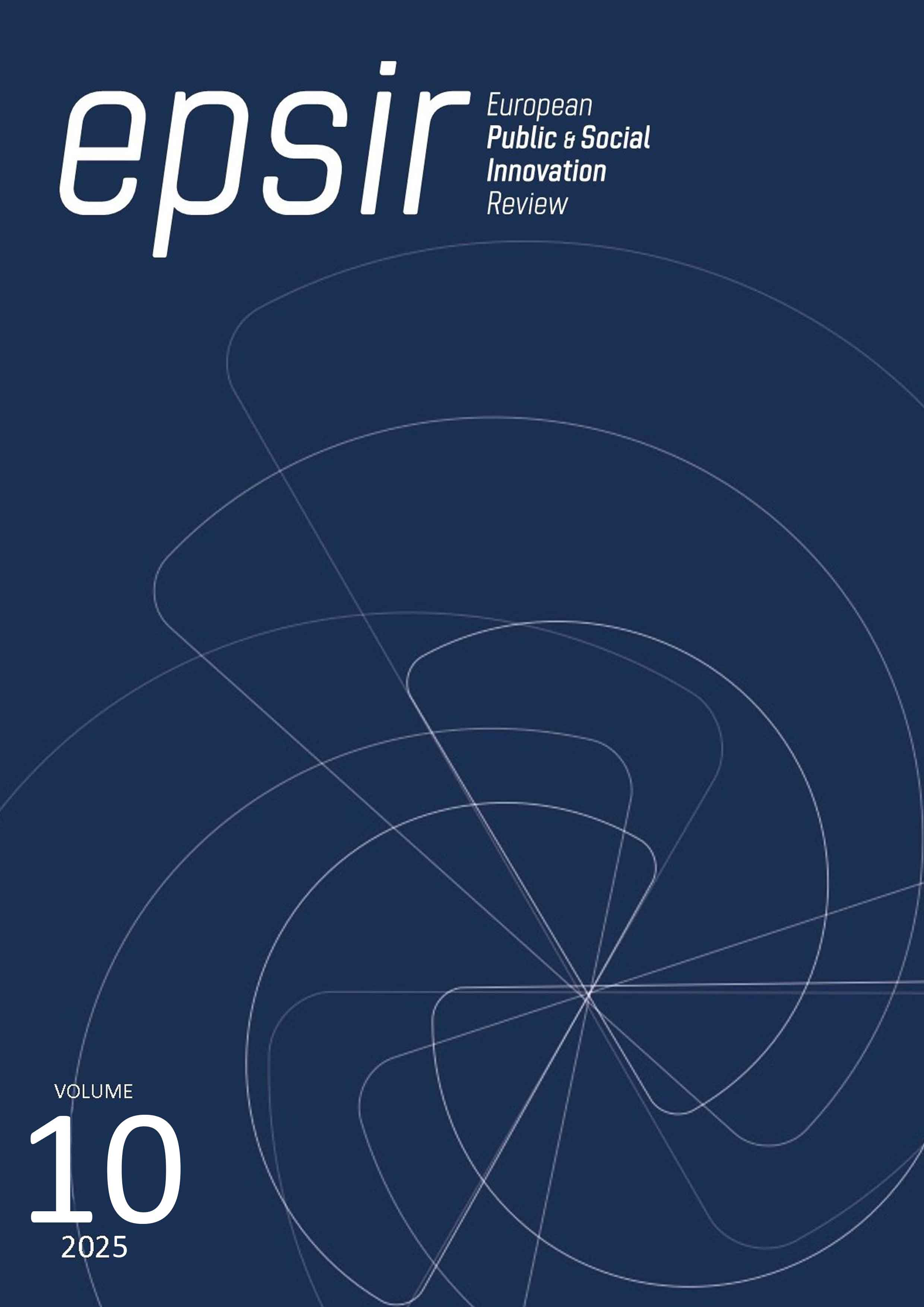Socioeconomic translation in the Peruvian Altiplano
DOI:
https://doi.org/10.31637/epsir-2025-1573Keywords:
Social mobility, educational mobility, intergenerational mobility, immobility, education, socioeconomic, Altiplano, PunoAbstract
Introduction: The purpose of the research is to know the leve lof educational dependence of sons and daughters with respect to that of their parents, in order to establish the degree and relationship of socioeconomic traslation or social mobility. Methodology: Apply a mixed approach, with a transversal desing. The quantitative study uses primary data that corresponds to a random sample of 580 households in the rural and urban mountains of the Peruvian Altiplano, located at more than 3.800 meters above sea level. For the qualitative approach, the focus group technique is applied with semi-structured questions focused on the educational preferences for the children of the family unit. Results: The education of both parents is significant for the son's educational achievement, in the case of the daughter, only the father's education is significant. The place of residence favors the daughter's educational archievement. Discussions: The socioeconomic transfer in the sons is associated with sociocultural and productive considerations. Conclusions: The probability of socieconomic transfer is low, the educational inheritance of the parents fails to break the chain of poverty, the returns to education in terms of income and ocupation are unfair.
Downloads
References
Azevedo, V. M. R. y Bouillon, C. P. (2009). Social Mobility in Latin America: A Review of Existing Evidence. SSRN Electronic Journal. https://doi.org/10.2139/SSRN.1543859
Becker, G. S. y Tomes, N. (1986). Human Capital and the Rise and Fall of Families. Journal of Labor Economics, 4, 1-39. https://doi.org/10.1086/298118
Blanden, J. (2013). Cross-Country Rankings In Intergenerational Mobility: A Comparison Of Approaches From Economics And Sociology. Journal of Economic Surveys, 27(1), 38-73. https://doi.org/10.1111/j.1467-6419.2011.00690.x
Castellani, F. y Zenteno, J. (2015). Pobreza y movilidad social en Bolivia en la última década. BID. https://doi.org/10.18235/0010077
Díaz, G. (2011). Estratificación y movilidad social en Guatemala. Revista Electrónica Nova Scientia, 4, 205-236.
Etesse, M. (2012). Movilidad educativa intergeneracional, educación superior y movilidad social en el Perú: evidencias recientes a partir de encuestas de hogares. https://goo.su/CdsFi
Galvis-Aponte, L. A. y Meisel-Roca, A. (2014). Aspectos regionales de la movilidad social y la igualdad de oportunidades en Colombia. Revista de Economía del Rosario, 17(02), 257-297. https://doi.org/10.12804/REV.ECON.ROSARIO.17.02.2014.03
García Jaramillo, S., Rodríguez Orgales, C., Sánchez Torres, F. J. y Bedoya Ospina, J. G. (2015). La lotería de la cuna: la movilidad social a través de la educación en los municipios de Colombia. Universidad de los Andes, Facultad de Economía, CEDE. https://doi.org/10.57784/1992/8605
Hauser, R. M. (2023). Breaking barriers: Robert Denis Mare and research on social stratification. Research in Social Stratification and Mobility, 88, 100799. https://doi.org/10.1016/j.rssm.2023.100799
Instituto Nacional de Estadística e Informática. (2023). Perú Compendio estadístico 2023 (Cuentas Nacionales). https://goo.su/o9MP2
Instituto Nacional de Estadística e Informática. (2024). Perú: Evolución de la pobreza monetaria 2014-2023 (Inf. téc.). https://goo.su/wtZD
Joye, D. y Falcon, J. (2014). Social Mobility. En Encyclopedia of Quality of Life and Well-Being Research (pp. 6123-6127). Springer Netherlands. https://goo.su/Woiv
Lefebvre, M., Pestieau, P. y Ponthiere, G. (2019). Missing poor and income mobility. Journal of Comparative Economics, 47(2), 330-366. https://doi.org/10.1016/J.JCE.2018.12.002
Maciej Serda, Becker, F. G., Cleary, M., Team, R. M., Holtermann, H., The, D., Agenda, N., Science, P., Sk, S. K., Hinnebusch, R., Hinnebusch A, R., Rabinovich, I., Olmert, Y., Uld, D. Q. G. L. Q., Ri, W. K. H. U., Lq, V., Frxqwu, W. K. H., Zklfk, E., Edvhg, L. V, … فاطمی, ح. (2011). Apartheid educativo. Educación, desigualdad e inmovilidad social en Bogotá. Revista de Economía Institucional, 13(25), 343-354. https://doi.org/10.2/JQUERY.MIN.JS
Mare, R. D. y Song, X. (2023). Social mobility in multiple generations. Research in Social Stratification and Mobility, 88, 100806. https://doi.org/10.1016/J.RSSM.2023.100806
Marginson, S. y Uk, M. A. (2016). The worldwide trend to high participation higher education: dynamics of social stratification in inclusive systems. Higher Education, 72, 413-434. https://doi.org/10.1007/s10734-016-0016-x
Mediavilla Bordalejo, M. (2-3 de febrero de 2006). Movilidad intergeneracional educativa: análisis del caso brasileño. XIII Encuentro de Economía Pública: Playadulce, Hotel Playadulce, Almería. p. 78. https://goo.su/3yG30v
Monroy-Gómez-Franco, L. (2023). Shades of social mobility: Colorism, ethnic origin and intergenerational social mobility. The Quarterly Review of Economics and Finance, 90, 247-266. https://doi.org/10.1016/J.QREF.2022.10.004
Schotte, S., Zizzamia, R. y Leibbrandt, M. (2018). A poverty dynamics approach to social stratification: The South African case. World Development, 110, 88-103. https://doi.org/10.1016/J.WORLDDEV.2018.05.024
Serrano Espinosa, J. y Torche, F. (2010). MS movilidad social en México: Población, desarrollo y crecimiento. Centro de Estudios Espinosa Yglesias. https://acortar.link/ccsZkA
Torche, F. y Ribeiro, C. C. (2010). Pathways of change in social mobility: Industrialization, education and growing fluidity in Brazil. Research in Social Stratification and Mobility, 28(3), 291-307. https://doi.org/10.1016/J.RSSM.2010.03.005
Yaschine, I. (2015). ¿Alcanza la educación para salir de la pobreza? Análisis del proceso de estratificación ocupacional de jóvenes rurales en México. Revista Mexicana de Ciencias Políticas y Sociales, 60(223), 377-405. https://goo.su/K7qOh
Downloads
Published
How to Cite
Issue
Section
License
Copyright (c) 2025 Lieslie Gallegos Arias, Carlos Renzo Rivera Calcina, William Sobrino Arias

This work is licensed under a Creative Commons Attribution-NonCommercial-NoDerivatives 4.0 International License.
Authors who publish with this journal agree to the following terms:- Authors retain copyright and grant the journal right of first publication with the work simultaneously licensed under Creative Commons Non Commercial, No Derivatives Attribution 4.0. International (CC BY-NC-ND 4.0.), that allows others to share the work with an acknowledgement of the work's authorship and initial publication in this journal.
- Authors are able to enter into separate, additional contractual arrangements for the non-exclusive distribution of the journal's published version of the work (e.g., post it to an institutional repository or publish it in a book), with an acknowledgement of its initial publication in this journal.
- Authors are permitted and encouraged to post their work online (e.g., in institutional repositories or on their website) prior to and during the submission process, as it can lead to productive exchanges, as well as earlier and greater citation of published work (See The Effect of Open Access).




